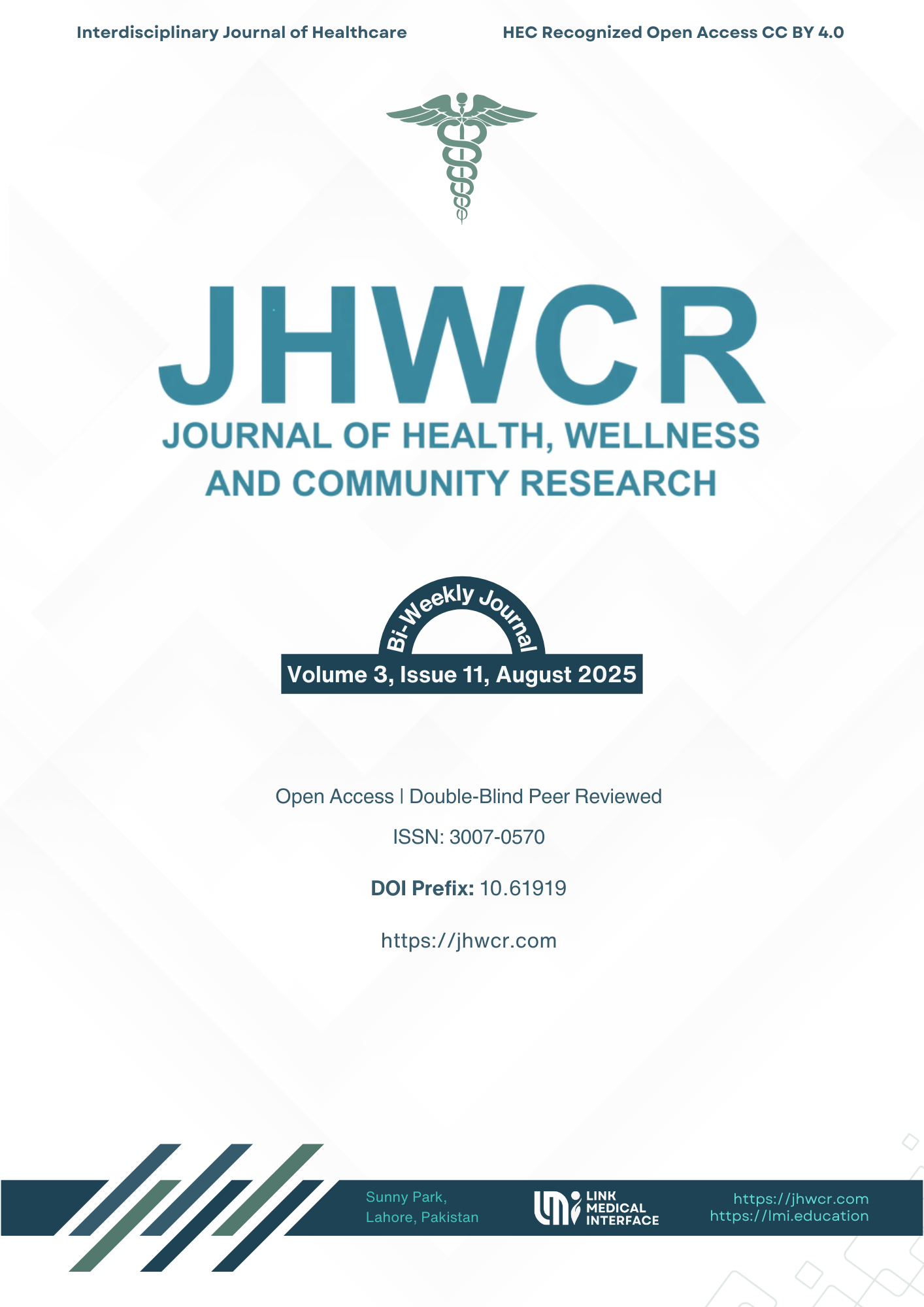Electrolyte Imbalance Patterns in Patients with Vomiting & Diarrhea in the Emergency Department
DOI:
https://doi.org/10.61919/gjzzk227Keywords:
electrolyte imbalance, hyponatremia, hypokalemia, hypochloremia, metabolic acidosis, vomiting, diarrhea, emergency departmentAbstract
Background: Electrolyte abnormalities are common in patients presenting with vomiting and diarrhea, and if left untreated may cause significant morbidity. Despite recognition of their clinical importance, limited data exist regarding their prevalence and symptom-specific patterns among adults in emergency departments in Pakistan. Objective: To determine the prevalence and patterns of electrolyte imbalances, including hyponatremia, hypokalemia, hypochloremia, and metabolic acid–base disturbances, in adult patients presenting with vomiting and diarrhea in the emergency department. Methods: A descriptive cross-sectional study was conducted in the Emergency Department of Lady Reading Hospital, Peshawar, from September to November 2024. A total of 150 adults (≥18 years) with vomiting, diarrhea, or both were enrolled using consecutive sampling. Serum sodium, potassium, chloride, and bicarbonate levels were measured at admission. Electrolyte abnormalities were defined using standard thresholds, and associations between clinical presentation and abnormalities were assessed using Chi-square tests with odds ratios and 95% confidence intervals. Results: Electrolyte disturbances were present in 112 patients (74.7%). Hyponatremia was observed in 62 (41.3%) and hypokalemia in 54 (36.0%). Vomiting was significantly associated with hypochloremia (43.4%; OR = 3.18, 95% CI: 1.36–7.42; p = 0.002), while diarrhea was strongly associated with metabolic acidosis (42.3%; OR = 4.91, 95% CI: 1.82–13.2; p < 0.001). No significant gender differences were noted. Conclusion: Electrolyte abnormalities are highly prevalent in adults with vomiting and diarrhea, with symptom-specific patterns supporting targeted diagnostic and therapeutic strategies. Routine electrolyte screening in emergency departments is essential for timely recognition and prevention of complications.
Downloads
Published
Issue
Section
License
Copyright (c) 2025 Muhammad Abas Khan, Syed Zain Ul Abidin, Khurram Iftikhar, Khushbakhat Aziz, Muhammad Zubair, Zalanda Shoaib (Author)

This work is licensed under a Creative Commons Attribution 4.0 International License.


